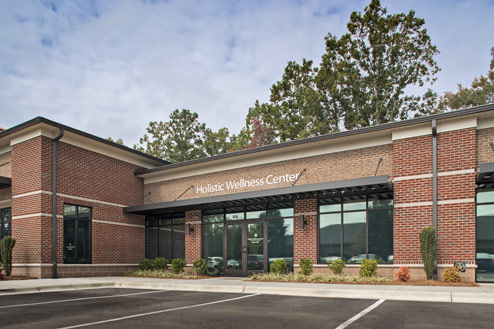Hello all,
After many years of remission, I’ve had a small flare up recently so I’ve been researching a bit on this topic again and wanted to share what I’ve found out.
To my surprise, a biological called Humira (adalimumab) has been approved for the treatment of this disease. This is a drug used for Arthritis, Chron’s disease and other autoimmune conditions. It is surprising because a few years ago, Hidradenitis suppurativa wasn’t officially considered an inflammatory disease with some autoimmune characteristics and very few people considered this to be a possibility. Apparently, nowadays it is common knowledge among those who know about the disease at least, because it seems that the condition is quite unknown to most doctors still.
Now, just to be clear,
I’m not advocating for the use of this drug, I’m just mentioning it because it shows that the condition is indeed inflammatory in nature and people who have it can benefit from other protocols that help with autoimmune conditions. Besides, that drug is VERY expensive and seems to have lots of side effects. Anyway, for those who are in a very advanced stage and suffering too much, it can be relief
with the proper medical care guidance.
Another interesting discovery was this study:
Hidradenitis suppurativa is a complex disorder, the pathogenesis of which is still unsolved. The known association between hidradenitis suppurativa and Crohn’s disease, an autoimmune disease diagnosed with the presence of Anti-Saccharomyces cerevisiae antibodies of the IgG family, suggests that...
www.surgjournal.com
Background
Hidradenitis suppurativa is a complex disorder, the pathogenesis of which is still unsolved. The known association between hidradenitis suppurativa and Crohn’s disease, an autoimmune disease diagnosed with the presence of Anti-Saccharomyces cerevisiae antibodies of the IgG family, suggests that a much more complex mechanism than a simple infectious disorder is involved. The goal of this study is to report patients’ characteristics and the outcome of 6 years of a yeast (Saccharomyces cerevisiae)-exclusion diet and surgery in the treatment of hidradenitis suppurativa.
Method
We analyzed 185 patients with hidradenitis suppurativa with a self-evaluative questionnaire. Thirty-seven patients were treated in our center following our protocol. The other 148 were members of a support group for patients with hidradenitis suppurativa treated by other centers.
Results
In 80% of patients who had the onset of hidradenitis suppurativa before the age of 30, the female to male ratio was 3.34:1, 74% were active smokers, and 5% also had Crohn’s disease. In the diet group, 70% had an improvement of hidradenitis suppurativa symptomatology, 81% of whom in less than 6 months. Also, 87% of patients demonstrated an immediate recurrence of skin lesions less than a week after consuming a food containing the yeast. Immunologic testing showed intolerance to yeast, wheat, and cow’s milk in 20%, 29%, and 23% of patients, respectively.
It turns out that there’s been research showing some prevalence of allergy to Saccharomyces cerevisiae yeast (brewer’s yeast) in people with Hidradenitis suppurativa, just as there is such thing in people with Chron’s disease. In fact Chron’s disease and Hidradenitis suppurativa seem to be related in many cases.
Anti-Saccharomyces cerevisiae IgG and IgA antibodies are associated with systemic inflammation and advanced disease in hidradenitis suppurativa
So, it seems that a yeast-free diet can help too, even if it isn’t a cure, at least it can keep the inflammation at bay which can help A LOT.
For me, keeping my diet clean has been the most important thing to avoid the spread of this condition. I’ve had a flare up recently, true, but it isn’t very big and it’s healing fast, and I haven’t been avoiding that particular yeast completely because I wasn’t aware of that possible correlation.
Another thing that I’ve found is that a lot of people mention that laser hair removal also helps a lot. Again, it’s not a cure, but it helps prevent new boils and bumps. As some of you might know, the surgery treatment which is usually done for this condition not only extracts the bumps and ‘tunnels’ but also, the way in which they do it, prevents hair from growing back in the area, this prevents the disease forming again, at least in that area and in most cases but it seems that not all. Laser therapy seems to work because it removes hair and prevents it from growing back, but some people suggest it even has a therapeutic effect.
If you've ever heard of Hidradenitis Suppurativa, then you know exactly how awful this condition is. For me, I initially thought it was some sort of cancer because of the painful, swollen, lump I developing in my armpit...

www.skinterrupt.com
Hidradenitis Suppurativa (HS) is a condition that affects many people, but isn't well-known. I struggled with it for a while, initially mistaking it for some sort of cancer because of the painful lump in my armpit!

www.skinterrupt.com
Just a note about laser hair removal: I wouldn't recommend doing it alone with those home-units, as laser therapy can burn and irritate the skin so if you have HS, I think it would be better to do it with a dermatologist who can assess the best settings and the proper healing after treatment.
Lastly, I want to share a case-study with only one person that I found interesting because it is a lady who’s been on a paleo diet for a long time and her blood tests were OK, but she still had the boils and even tunnels. They treated her with a protocol that is mentioned there, and it could be used as a guidance for those suffering with this condition.
Functional Interventions For Hidradenitis Suppurativa: A Case Report Hidradenitis Suppurativa (HS), also known as acne inversa, is a inflammatory skin condition thought to be autoimmune in nature. Typically the bumps will occur under the armpits, inside the legs and under the breasts. It has...

www.holisticcharlotte.com
The patient is a 54 year old female who presents with two half inch boils on the inside of her right leg. The boils have tracks that run approximately one inch distally. She is a successful executive who works out four times a week, eats a whole food paleolithic diet, and overall, has a superior self care regimen. The patient started to notice the painful bumps when she was 16 years old. She states they come and go and cannot identify any pattern or trigger. The patient’s blood chemistry is excellent. All her inflammatory markers such as CRP-hs, fibrinogen and sedimentation rate were within normal ranges. The patient’s thyroid, urinalysis, comprehensive metabolic panel, and salivary hormone panels were also normal.
The only other marker in her labs that may be of note is that her red blood cell zinc were below lab ranges. This was further clarified with a positive zinc taste test. She does have a history of Helicobacter pylori infection, that according to her has not been previously treated. The patient has had two surgeries to remove the cysts that developed under the skin, unfortunately they were ultimately unsuccessful considering the recurrence.
Timeline of treatment:
Consultation: 6/4/18
Prescribed supplements:
- Zinc tapering up based on tolerance until the patient reached 90mg daily
- NAC – one serving TID
- Resveratrol and turmeric – 250mg of each TID
- Low-dose Naltrexone – 1.5mg increasing weekly until 4.5mg
- Essential oil blend of lavender, tea tree, bergamot, cedarwood and frankincense – applied topically BID
- ADEK (emulsified) – once daily
- Original MYMOP
Patient listed pain at a 6/10 with 10 being the highest. This was related to her ability to put tight clothes on.
They continue the report with 2 more consultations done a month and a year later with the improvements perceived by the client. Then they share this:
Diagnostic focus and assessment
There are some positive studies revealing zinc therapy as a potential treatment for HS. Considering the patients low RBC zinc levels it seems logical to embark on supplemental zinc
(Poveda et al. 2018). Considering the positive results with biological immunosuppressant drugs and the logical notion HS is an autoimmune skin condition we decided to do a trial course of Low-dose naltrexone (LDN). LDN is a drug that regulates opioid receptors in the brain thereby enhancing the production of TH-3 cells. TH-3 cells are immune cells that balance and coordinate immune function. Not surprisingly patients on LDN have seen tremendous results when managing various autoimmune conditions
(Lee and Elston 2018). All other choices such as NAC, ADEK also enhance the production of TH-3 cells whilst resveratrol and curcumin suppress TH-17 cells which are immune cells that direct the breakdown of tissues in autoimmunity. The essential oil use is targeted locally to heal the tissue and prevent bacterial infections when the patients follicles are blocked. The MYMOP assessment was chosen to monitor the impact of her HS between diagnostic screens.
And well, that’s all. I just wanted to share all of this with you so the information is available.






